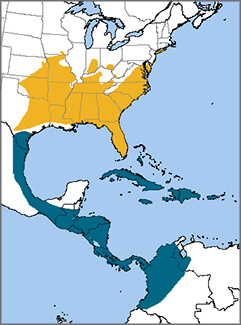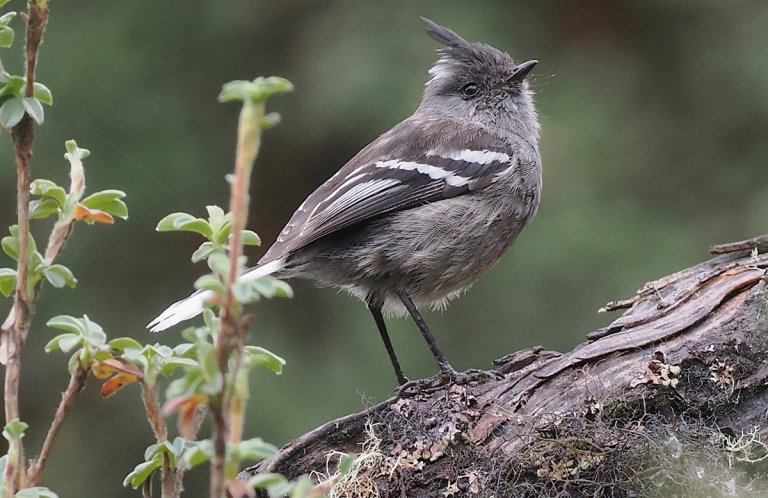 Chuck-will's-widow belongs to a family of birds with the folk name “goatsuckers.” The family name, Caprimulgidae, literally means “milker of goats” and is based on an ancient belief that the birds milked goats with their enormous mouths each night.
Chuck-will's-widow belongs to a family of birds with the folk name “goatsuckers.” The family name, Caprimulgidae, literally means “milker of goats” and is based on an ancient belief that the birds milked goats with their enormous mouths each night.
In reality, the birds' attraction to livestock was likely due to the presence of insects. Chuck-will's-widow forages at dusk and dawn, silently swooping over the ground in search of prey. Specialized feathers known as rictal bristles help funnel insects into the bird's mouth, which is so large that they may occasionally swallow small birds and bats as well!
The “chuck” is the largest nightjar in North America and is almost entirely nocturnal. During the day, the birds roost along tree branches or on the ground, where their beautifully mottled brown plumage provides perfect camouflage against dried leaves and tree bark.
Sign up for ABC's eNews to learn how you can help protect birds

Chuck-will's-widow and chicks by Dick-Snell
Chuck-will's-widows do not build nests, instead laying their eggs on the ground among dead leaves, pine needles, or on bare dirt. Incubating adults are almost invisible against the forest floor and only flush off their nests when closely approached.
Since they have a highly insectivorous diet, Chuck-will's-widows are impacted by pesticide use. They are sometimes killed by cars when they land on roads at night to pick up grit. Habitat loss on both breeding and wintering grounds is also a continual threat.
This nightjar winters in lowland forests throughout the Caribbean, Mexico, and Central America, where it shares habitat with Wood Thrush, Kentucky and Prothonotary warblers, and Painted Bunting. Chuck-will's-widow is benefiting from ABC's efforts to "bring back the birds" in these areas, with our focus on conserving geographically linked habitats both north and south.
Donate to support ABC's conservation mission!



















































